Expansion of the castle in the 16th century in the reign of Duke Barnim XI (2nd and 3rd quarter of the 16th century)
Barnim XI, called the Old, son of Bogislaw X, sought to raise the status of the main ducal residence and gave decorative forms with rich content to his grandfather’s and father’s castle. Firstly, in the 1530s, he added a third floor to the “Big House” and erected a staircase tower on its central axis (today’s Clock Tower). The most characteristic features of the “Big House” in the 16th century were its diversity and richness resulting from the combination of late-Gothic architectural forms with Renaissance sculptural and painterly representations. The façades were decorated with tracery (probably made by Friedrich Nussdorfer) and artistic representations. On the façade, starting from the bottom, figures of men are shown with seven liberated arts, animals and virtues above them, and at the highest point are winged lions and a man in armour. The castle interiors with brick floors on the ground floor were covered with rich net vaults (today’s wedding hall of the Civil Registry Office) as well as wooden ceilings on the upper floors. The vaults and ceilings were decorated with twisting plants and flowers covering the walls. The particular importance of some of the rooms was emphasized by paintings showing stories taken from the Bible and Ovid’s “Metamorphoses”. Vivid, contrasting colours, such as red, green, black and yellow, were the dominant colours in the paintings.
The “Big House”, extended by Prince Barnim IX, became, along with the church of St. Otto, the main part of the castle layout. Its completion is confirmed by a stone plaque founded by the duke, with the coat of arms of the Duchy of Pomerania and the date 1538 (currently above the porch on the eastern wall facing the Great Courtyard).
In 1551, in the reign of Barnim IX, the “Big House” was partially destroyed by fire, which resulted in a large-scale reconstruction of the interior of the ducal seat and creation of a new wing of the castle: the eastern wing, with early Renaissance architectural forms. The building, which was completed in 1559, served practical purposes. The ground floor and cellars were designated for a kitchen, bakery, brewery and warehouses, and higher floors were used for residential purposes.





